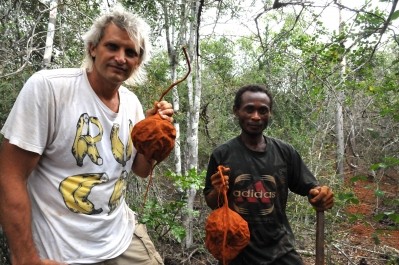Special Edition: Botanicals
Despite bad publicity, adulteration picture slowly improving, experts say

The article is based on an earlier study by Canadian researchers who used DNA barcoding technology to examine the contents of 44 herbal supplements. They concluded that as many as a third contained none of the stated active ingredient, whereas others were adulterated with undeclared ingredients including, in one case, black walnuts, a potential allergen.
A previous NutraIngredients-USA article examined why the technology the researchers used might not be fit for purpose when examining herbal products. The technique looks at a snippet of DNA, but many herbal products are based on extracts, which by their nature contain no genetic information for the active ingredient. In that case, the method might find only the DNA of excipients, such as rice.
Call for withdrawal of paper
The researchers claim to have looked at products based only on whole plant powders. But there is enough confusion on that score and other weaknesses in the paper to lead the American Botanical Council (ABC) to call for its withdrawal and a resubmission to a new peer review after the paper is revised.
“We have a list of eight or nine points of confusion and errors and methodological flaws in technique. We mean no disrespect to the authors, no disrespect to the journal. But if this paper is not withdrawn, it is going to continue to generate negative publicity,” Mark Blumenthal, excecutive director of ABC, told NutraIngredinets-USA.
At least one author indicated that some extracts were included in the tests, Blumenthal said. Other flaws in the paper included misspelled Latin names, confusing the issue of what exactly was tested and how rigorous the review was.
“There is confusion on points of taxonomy in this paper,” Blumenthal said. “There is confusion about some of the statistics and conclusions in the paper what don’t match what is in the abstract.”
How bad is it?
Nevertheless, the researchers said they found adulteration in 60% of the products. Does that paint a true picture of adulteration in the marketplace?
“We can’t agree that 60% or 70% of herbal products are adulterated. That seems to be an abnormally high and difficult-to-accept figure even among those of us who are spending a lot of our time looking at and finding adulteration,” Blumenthal said.
Since 2011 ABC, in cooperation with the American Herbal Pharmacopoeia (AHP), and the University of Mississippi's National Center for Natural Products Research (NCNPR), has operated an Adulterants Program, which acts as an educational resource for industry on product and ingredient adulteration.
The scope of the issue is huge. Has the program made a dent in the daunting task of reigning in adulteration? Or is it getting worse despite the coalition’s best efforts?
“It’s very difficult in this huge market to develop a reliable denominator to develop any reliable statistical guess,” Blumenthal said. “We are approaching this whole thing on a botanical by botanical basis.”
It’s a steep hill to climb. So far the program has published four detailed articles in ABC’s HerbalGram quarterly on bilberry, black cohosh, grapefruit seed extract and germander. But Blumenthal acknowledged that there are many hundreds of botanicals on the market, with new categories of adulteration popping up on a regular basis.
“We have some allegations of adulteration of cranberry. That is something that we have just started to look into within the last few months. We never had cranberry on our list of known or possible adulterants before,” he said.
“The spectrum of items that we are looking at based on information provided to us, that scope is widening,” Blumenthal said.
Turning the regulatory screws
But there are rays of light within that potentially dark picture. Increased regulatory scrutiny, however uncomfortable to some in the industry, is serving to raise the bar for all companies, said Roy Upton, executive director of the American Herbal Pharmacopoeia (AHP).
“I think it’s getting better and the reason is that FDA is knocking on doors first making sure people have specs. That can only make things better,” he said.
“Second, increased FDA oversight is now causing more suppliers to be aware. Remember, the supply chain was originally exempt from supplement GMP requirements. But now with increased oversight by FDA on manufacturers and then manufacturer pushback on the supply chain, that is causing the supply chain to do more testing that can only lead to more awareness of adulteration,” Upton said.
And Upton said the implementation of the Food Safety Modernizaiton Act will serve to improve the situation, too.
“Remember that supplement ingredients are a subcategory of food. Even though they don’t have to comply with dietary supplement GMPs they do by law have to meet food GMPs. That means they have to accurately identify and accurately disclose what they are selling,” he said.
Increased educational resources
The goal of the program is to reach those companies that are non it compliance because of inexperience or misinformation. It won’t do much to stem the activities of active adulterers with no regard for ethics or law, Upton said, but for the majority of industry, there are more and more ways of finding out how to do things right.
“A lot of companies in my opinion are not doing it purposefully. The reputable people are not failing GMPs on purpose. They just don’t know what the most appropriate identity standard is. They don’t know what the most appropriate tests are,” he said.
“People are asking for guidance for sourcing good products. People are constantly asking for educational opportunities on GMP compliance. This wasn’t happening 10 years ago as much,” Upton said. “There is just more and more out there. You have AHPA doing their botanical congress. You have UNPA sponsoring quality control workshops. That can only make things better.”
















